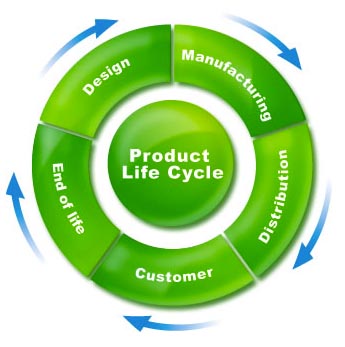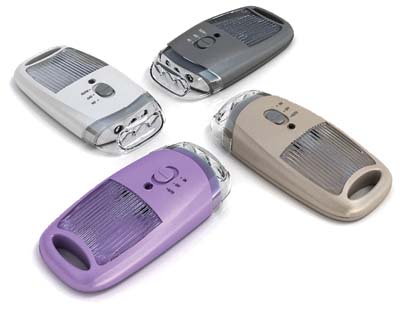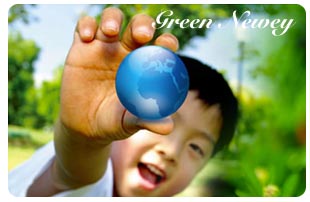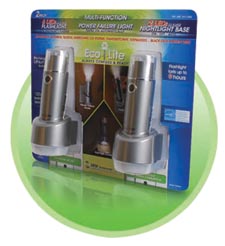 |
 |
|
 |
| |
|
|
| |
 |
 |
|
| Protecting the Environment |
|  NEWEY is committed to excellence and leadership in protecting the environment. In keeping this policy, our objective is to reduce waste and emissions from our operations. We strive to minimize impact on the air, water, and land through excellence in pollution prevention. By successfully preventing pollution at its source, we can achieve cost savings, increase operational efficiencies, improve the quality of our products and services, and maintain a safe and healthy workplace for our employees. NEWEY is committed to excellence and leadership in protecting the environment. In keeping this policy, our objective is to reduce waste and emissions from our operations. We strive to minimize impact on the air, water, and land through excellence in pollution prevention. By successfully preventing pollution at its source, we can achieve cost savings, increase operational efficiencies, improve the quality of our products and services, and maintain a safe and healthy workplace for our employees.
NEWEY sees global environmental conservation and protection as one of the most critical issues for mankind in the 21st century. We believe that as a good corporate citizen, we must be an active participant in this industry initiative to conserve the environment and create a sustainable society. At NEWEY, we make every effort to design products that minimize power consumption and component count while maximizing power conversion efficiency. This leads to less consumption of fossil fuels, less energy spent in manufacturing unneeded components and lower total cost of ownership. We don't think that saving energy should come at the cost of pricey solutions!
Reducing CO2 Emissions and Energy Consumption by Green Design
While human beings have been enjoying the fruits of rapid technology development, the earth is suffering the negative consequences of the technology boom. With global warming and climate change deteriorating, people are beginning to realize the inseparability between the fate of the globe and the future of all human beings. Therefore, many efforts are being made to reduce CO2 emissions.
NEWEY is deeply aware of the importance of coexisting with the environment for sustained growth and development. As a result, NEWEY has launched several green product initiatives. In 2009, NEWEY received ISO14001 certificate, an international standard that ensures company's management system abides by environmental policies. In the same year, NEWEY announced WEEE/RoHS compliance statements, declaring our products accommodate WEEE waste disposal regulations and restriction on the use of hazardous substances imposed by RoHS. NEWEY received IECQ QC080000 in 2010, demonstrating our commitment to controlling hazardous substances used in products, thereby achieving an environmental management system.
|
|
|
Higher Efficiency – It's our Vision |
| There are three key objectives that are a must for every new product we design at NEWEY: |
| |
 Highest Efficiency Highest Efficiency
 Smallest Size Smallest Size
 Lowest Total Cost of Ownership Lowest Total Cost of Ownership |
| |
| As part of our efforts to maximize efficiency, we constantly review the many governmental efficiency guidelines andmandates regarding the reduction of energy waste in power supplies. Our silicon and systems design experts then incorporate features into our products that allow us to exceed these stringent requirements. Our products all include proprietary circuits and design techniques aimed at conserving as much energy as possible during the power conversion process – whether running at full rated load, or in low-power standby mode. Links to some of the key specifications regarding power supply efficiency and standby power are available below. |
| |
Quality Policy
NEWEY's Quality Assurance Policy is based on the four principles of excellent product quality, topnotch technology expertise, unsurpassed customer satisfaction, and market leadership. Our HSF policy is underpinned by the commitment to promoting green technology to create a new, fresh environment.
NEWEY is convinced that a company's profits and market share growth lies in the constant provision of first-rate products and services, and to reach this goal, a quality improvement policy must be implemented throughout the company. With this policy, the belief of excellent product quality, superior service delivery, unsurpassed customer satisfaction, and green product provision can be put into practice by every employee in their life and work. In this way, product and service quality can be further improved and the impact of hazardous substances on the environment will be reduced. In the end, we will be able to rack up the ultimate goal of delivering best quality of service to our customers. We will continue to fully support and supervise our employees to accomplish the mission of quality improvement. |
| |
 Product Life Cycle Product Life Cycle
 Design: Design:
Ban on use of hazardous substances.
Use of components easy to recycle and disassemble.
Design of low power consumption products.
 Manufacturing: Manufacturing:
Reduction in material usage.
Reduction in energy consumption.
Control of pollutant emissions.
 Distribution: Distribution:
Simplification of packaging.
Use of recycled raw materials.
Use of energy-efficient and low-pollution vehicles.
 Customer: Customer:
Use of endurable and low toxicity materials.
Reduction in disassembly time and use of highly reusable materials.
Conformation to EMI standard.
 End of Life: End of Life:
Recycling and treatment of used hazardous substances.
Conformation to WEEE standard.
Ban on incineration of non-recyclable products.
|
 |
| Hazardous Substance Compliance |

NEWEY, in cooperation with its suppliers, closely monitors and manages chemical substances used in its products at all stages of the manufacturing cycle, from the raw material and component stages right through to final shipment. Please see information regarding our RoHS programs on our Environmental Compliance pages. |
 |
| Design Guide |
A number of hazards caused by raw materials and components can occur during product design, manufacturing, marketing and disposal, posing a threat to the ecosystem. Therefore, the impact on the environment should be taken into account at the early design stage. Enterprises have to make a thorough plan to help reduce the impact of the products on the environment.
  To accomplish this goal, NEWEY has drawn up a green design guideline: To accomplish this goal, NEWEY has drawn up a green design guideline:
 Eliminate the use of hazardous substances (HSF) Eliminate the use of hazardous substances (HSF)
Regulate content and limit of hazardous substances in accordance with international standard directives. NEWEY has drawn up a reduction plan for hazardous substances.
 Easy disassembly and recycling (WEEE) Easy disassembly and recycling (WEEE)
Use recyclable and easy disassembled parts and conform to recycling rate requirements in accordance with international standard directives. NEWEY has developed 3R reports for every product (disassembly manual).
 Eco-design (EuP) Eco-design (EuP)
Reduce energy consumption and emission of hazardous substances during the entire product life cycle in accordance with international standard directives. NEWEY has established practices of EuP Directive.
|
 |
| HSF consideration |
| Manufacturing of green products consists of three phases. The first phase involves accessing information on hazardous substances contained in the raw materials and components. The information provided by suppliers must include substances used in the materials and components, examination results of hazardous substances and MSDS (Material Safety Data Sheets). All information must be complete and correct to ensure all materials and components used in the product abide by related regulations.
The second phase is product manufacturing. In this phase, qualified materials and components must be used and a strict control must be made to prevent mixture of hazardous substances and abnormal components, thereby reducing pollution caused by these substances. In addition, supplier audit process, incoming quality inspection, measurement system and the manufacturer's internal audit process are used to ensure the reliability of HSF regulations in the quality assurance process.
The third phase is to provide product content information to the public and the customer. In this phase, the inclusion of hazardous substances and key ingredients of the product are made clear.
NEWEY's endeavor to ensure products comply with HSF regulations begins at the R&D stage, with the aim to reduce waste of resources in future production and quality assurance processes, especially strengthen green design while promoting QC080000.
 Hazardous Substances Management Hazardous Substances Management
Acquisition of raw materials must be systematic and efficient so hazardous substances are prevented during production. As 80% of the sustainability of a product is determined at the R&D stage, NEWEY is very careful about the use of chemicals during product design. Besides strictly abiding by the regulations for specific chemicals, NEWEY also severely requires its suppliers to restrict the use of hazardous chemicals.
NEWEY's hazardous chemicals management is based on the RoHS Directive. On January 1, 2006, NEWEY claimed full compliance to the RoHS Directive. Apart from Pb, Cd, Hg, Cr6+, PBBs and PBDEs banned by the RoHS Directive, NEWEY has also restricted the use of deca-BDE and PFOS in all products.
 Production Process Management Production Process Management
During manufacturing, the production area and tools used to manufacture products with HS (Hazardous Substances) must bear a distinctive mark (e.g. a HS label or an orange dotted tag) to distinguish themselves from HSF products and tools. Production must be controlled in accordance with the manufacturer's regulations.
 Storage Management Storage Management
Storage of HS materials and products must bear a distinctive mark (e.g. an orange index card) to distinguish themselves from HSF materials and products. Storage must be managed in accordance with the company's regulations.
|
 |
| WEEE consideration |
|  In order to diminish the impact of waste electronic/electric equipment on humans and the environment, EU announced the WEEE Directive in early 2003. Under the guideline of prevention, recycling and safe disposal of waste, WEEE aims to reduce waste generation from electronic/electric equipment and its impact on the environment through reuse and recycling, thereby enhancing the environmental-friendliness of electronic/electric equipment. In order to diminish the impact of waste electronic/electric equipment on humans and the environment, EU announced the WEEE Directive in early 2003. Under the guideline of prevention, recycling and safe disposal of waste, WEEE aims to reduce waste generation from electronic/electric equipment and its impact on the environment through reuse and recycling, thereby enhancing the environmental-friendliness of electronic/electric equipment.
 Easy disassembling design: Easy disassembling design:
Easy disassembly design aims to facilitate recycling and reuse of waste equipment. The key concept is to help users easily and quickly remove beneficial and harmful components. If, after being designed, a product is found to be difficult to recycle and disassemble, a manual on product recycling and disassembling will be provided in a bid to reduce disassembling costs
|
| |
| EuP consideration |
In response to EU's EuP (Energy-using Products) Directive, NEWEY participated in a program held by Foundation of Taiwan Industry Service in 2008 that is aimed to advocate design concept based on product life cycle. Through this program, NEWEY not only gained understanding of LCA (Life Cycle Assessment), but learned to evaluate the impact of resources on the environment during material procurement, product manufacturing and use, and waste recycling and disposal. The program strengthened NEWEY's knowledge of Eco-design requirements and assessments. NEWEY has completed an Eco-profile using a LCI (Life-Cycle Inventory) questionnaire and used the profile to implement EuP evaluation.
In order to achieve green design, NEWEY has drawn up a three-stage plan:
 Using product life cycle assessment to evaluate component manufacturing in conformity to the environmental requirements of EuP. Using product life cycle assessment to evaluate component manufacturing in conformity to the environmental requirements of EuP.
 Using LCA to analysize the impact of product components on the environment and mark the results in design guidelines. Using LCA to analysize the impact of product components on the environment and mark the results in design guidelines.
 Providing eco-profile to R&D staff and users to guarantee quality assurance in NEWEY products. Providing eco-profile to R&D staff and users to guarantee quality assurance in NEWEY products.
|
| |
| Package consideration |
 Packaging and products complement each other. As packaging increases the added value of a product, it is becoming more and more significant. With the rapid rise of environmental awareness, not only the product but also its packaging has to conform to environmental regulations. The aim of green packaging design is to reduce the consumption of packaging materials, improve efficient use of packaging resources and decrease impact of waste packaging materials on the environment. Packaging and products complement each other. As packaging increases the added value of a product, it is becoming more and more significant. With the rapid rise of environmental awareness, not only the product but also its packaging has to conform to environmental regulations. The aim of green packaging design is to reduce the consumption of packaging materials, improve efficient use of packaging resources and decrease impact of waste packaging materials on the environment.
Several major considerations for packing design presented by NEWEY include eliminating hazardous substances and encouraging reuse, recycling and reproduction.
 3R1D Design Guideline: 3R1D Design Guideline:
Reduce: Simplified packaging and reduced use of packaging materials to cut down costs and environmental pollution.
Reuse: Reuse of packaging materials such as multifunctional packaging.
Recycle: Recycling of packaging materials for use in other applications.
Degradation: Development of degradable packaging materials such as microorganism-degradable materials.
Selection of packaging materials is very important because it determines the impact of materials on the environment as well as the recyclability of the waste packaging. In light of the trend towards green packaging, NEWEYis aware of its social responsibility and the need to further improve environmental consciousness of the employees. As a result, NEWEY has established the abovementioned green packaging design guidelines to carry out its green packaging design concept.
|
| |
| |
| |
|
|
| |
|
|
|
| |
 
|
|
|

|
|